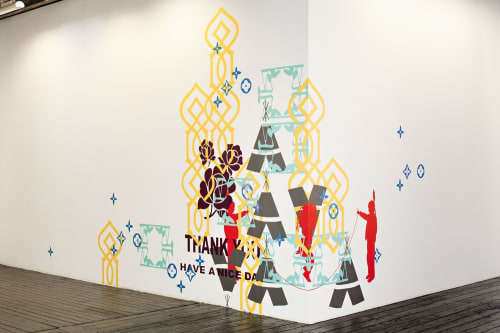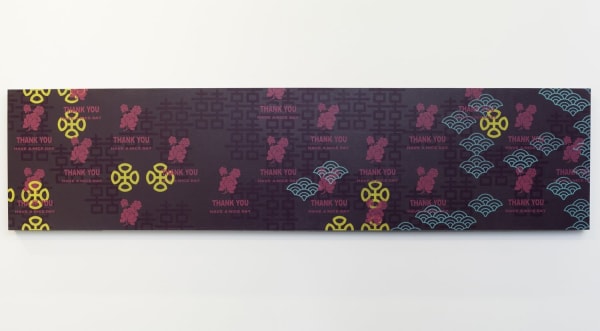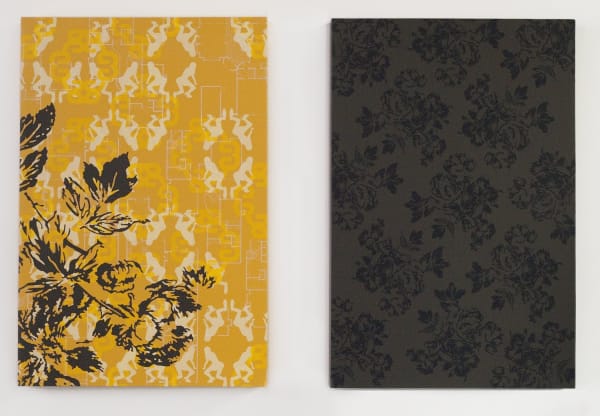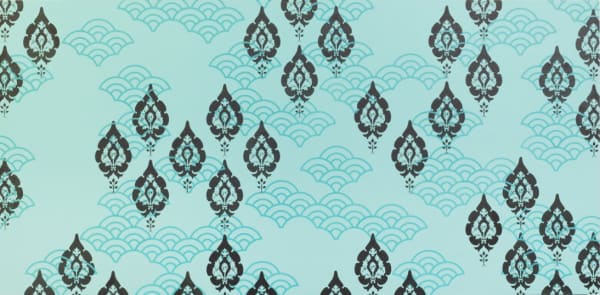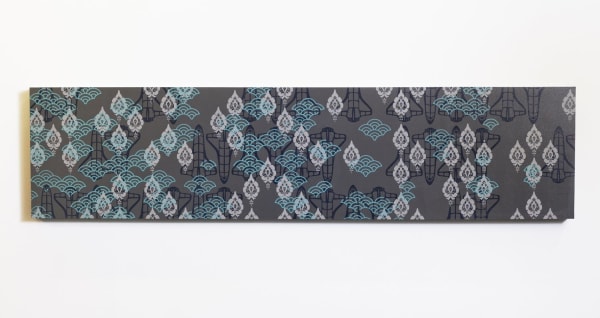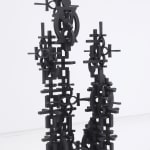Julie W. Chang: Chinese. Japanese. Indian Chief.
Hosfelt Gallery, New York
The title of Julie Chang’s exhibition, Chinese. Japanese. Indian Chief, refers to a children’s game she remembers playing with her friends in elementary school. Chang’s newest body of work, comprised of 84 hyper-colorful paintings on panel ranging from 12 x 12 to 24 x 96 inches, is full of archetypes of Japanese, Chinese, and Native American cultures. Teepees, Chinese pagodas, and Japanese rainbows proliferate as ostensibly innocuous design elements layered and intertwined in repetitive patterns. The unexpected co-mingling of these diverse images foregrounds their shared similarity in representing “the other.” Chang combines these symbols with other images referencing childhood memories of achievement, status and assimilation as the daughter of Chinese immigrants, growing up with obligatory piano, ballet and tennis lessons in the quintessential land of golden promise, Orange County, California.
Chang also exploits cultural symbols so ubiquitous as to be commodified, such as the Chinese symbol for Double Happiness. For the traditional Chinese woman, its paradoxical promise of the good life meant becoming a submissive housewife. In more contemporary terms, the process of seeking its attainment is a trap that inherently breeds perpetual discontent, similar to the suburban dystopic byproduct of the American Dream.
In a tongue-in-cheek dialogue with design as promoted in magazines like Elle Decor, Chang thinks of the paintings as color swatches, which, when hung together, tell “color stories.” The symbols as patterns spread virally from one panel to the next. Chang’s excess of design exposes the loaded meanings behind what we often think of as merely pretty patterns.
Julie Chang is the youngest of 5 artists commissioned to create public art for the new San Francisco Transbay Center. When completed in 2015, her project, a 20,000 square-foot terrazzo floor in the Grand Hall, will be the largest fine art application of that material in history. Chang was raised in Orange County, California and lives in San Francisco. She received a B.A. from Tufts before doing graduate studies at the San Francisco Art Institute and completing an MFA in 2007 at Stanford. This is her first solo exhibition in New York.
